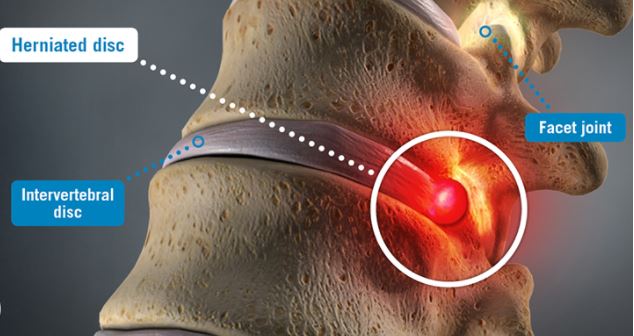We Are Herniated Disc Experts
state of the art ultrasonic Herniated Disc Treatment
What is Herniated Disc ?
The spinal column begins at the base of the skull and spans from the cervical spine in the neck through the thoracic spine in the middle back and into the lumbar spine in the lower back. Made up of 24 individual vertebral bodies and several fused vertebrae in the pelvic region, the spinal column is flexible enough to allow for the full range of motion in the neck and back that’s required for daily activity and also strong enough to support the weight of the upper body.
Serving as shock-absorbing cushions for the spine, discs are positioned between adjacent vertebrae to facilitate movement and reduce friction. Each disc has two parts: a thick exterior composed of collagen fiber (annulus fibrosus), which surrounds and contains an inner core of protein gel (nucleus pulposus). These components are high in water content and must remain well hydrated and pliable in order to function properly. For a variety of reasons, the discs can begin to deteriorate and dehydrate over time, becoming brittle and prone to breakage. If a fissure develops in a disc’s annulus fibrosus, some of the nucleus pulposus can pass through its compromised boundary. This condition is referred to as a herniated disc. Pain and other uncomfortable symptoms can develop if displaced inner disc material — which contains inflammatory proteins — irritates or pressures the disc wall, the spinal cord or a nearby nerve root.

What Are The Causes Of Herniated Disc?
- The natural aging process. Due to the cumulative effects of an aging body and ongoing wear and tear on the spinal components, the discs gradually weaken and become more susceptible to rupture.
- Spinal trauma. Injuries that result from a forceful blow to the spine can cause immediate disc herniation.
- Repetitive stress. Sitting for prolonged periods or repeatedly lifting heavy objects can cause a series of small tears to develop in a disc’s outer wall, tears that can worsen over time and lead to full disc herniation.
- Unhealthy body weight. The spine must support the majority of the body’s weight, and the pressure of carrying extra pounds, particularly in the abdominal region, can strain and damage the spinal components.
- Poor nutrition. An unbalanced diet can lead to weight gain and also deprive the discs of the nutrients needed to remain supple and strong.
- Tobacco use. Smoking inhibits circulation and interferes with the delivery of essential nutrients throughout the body, including the spine. Cigarette smoke also contains a multitude of toxins that can affect the discs as well as other parts of the body.
- Genetics. A family history of disc herniation and other degenerative spine conditions can increase the likelihood a person will develop similar conditions.
Am I the right patient for Herniated Disc Treatment?
If you have herniated disc, call us about the SonoSpine Procedure